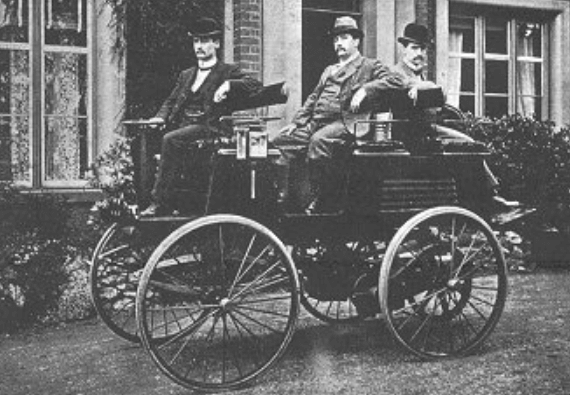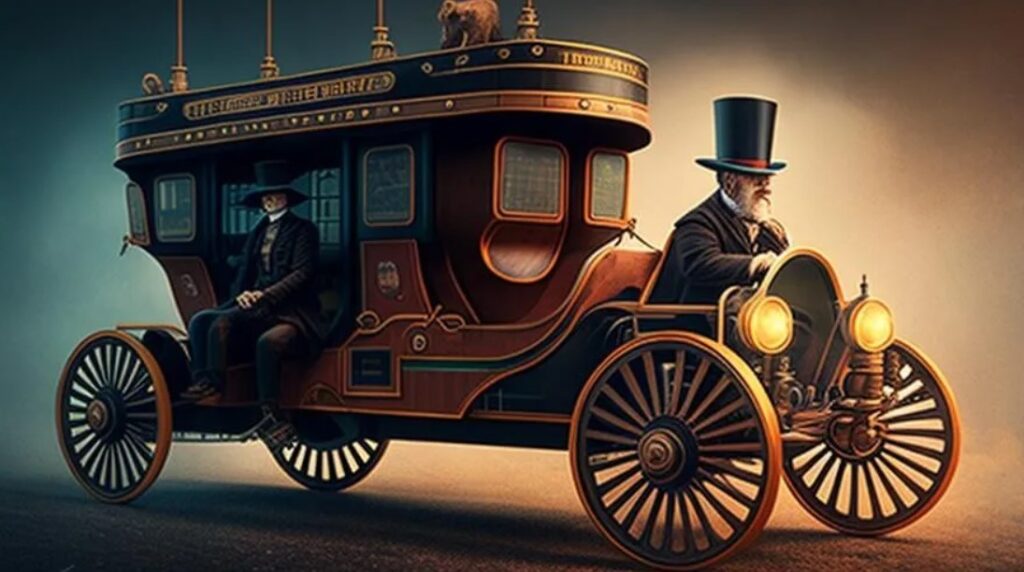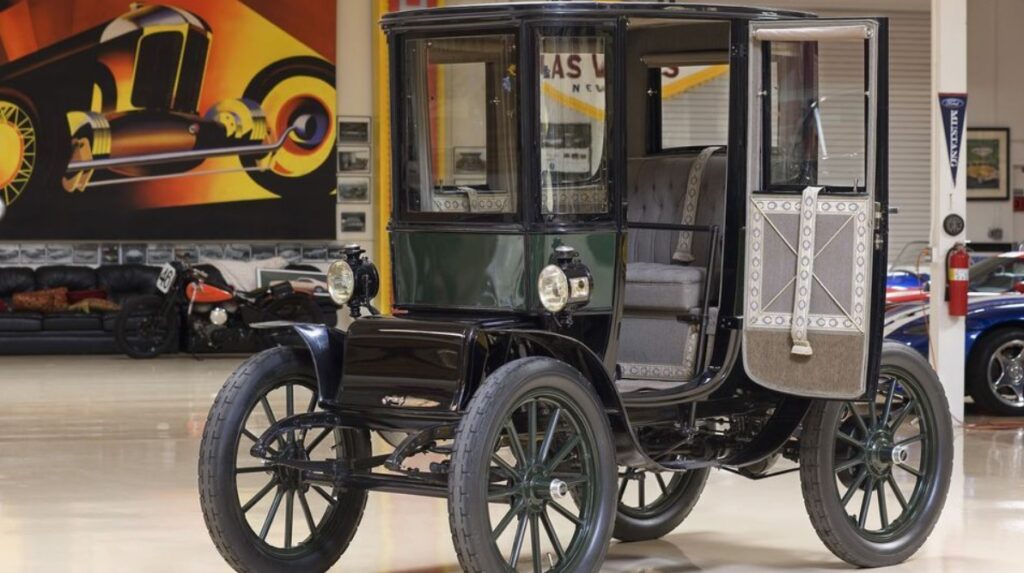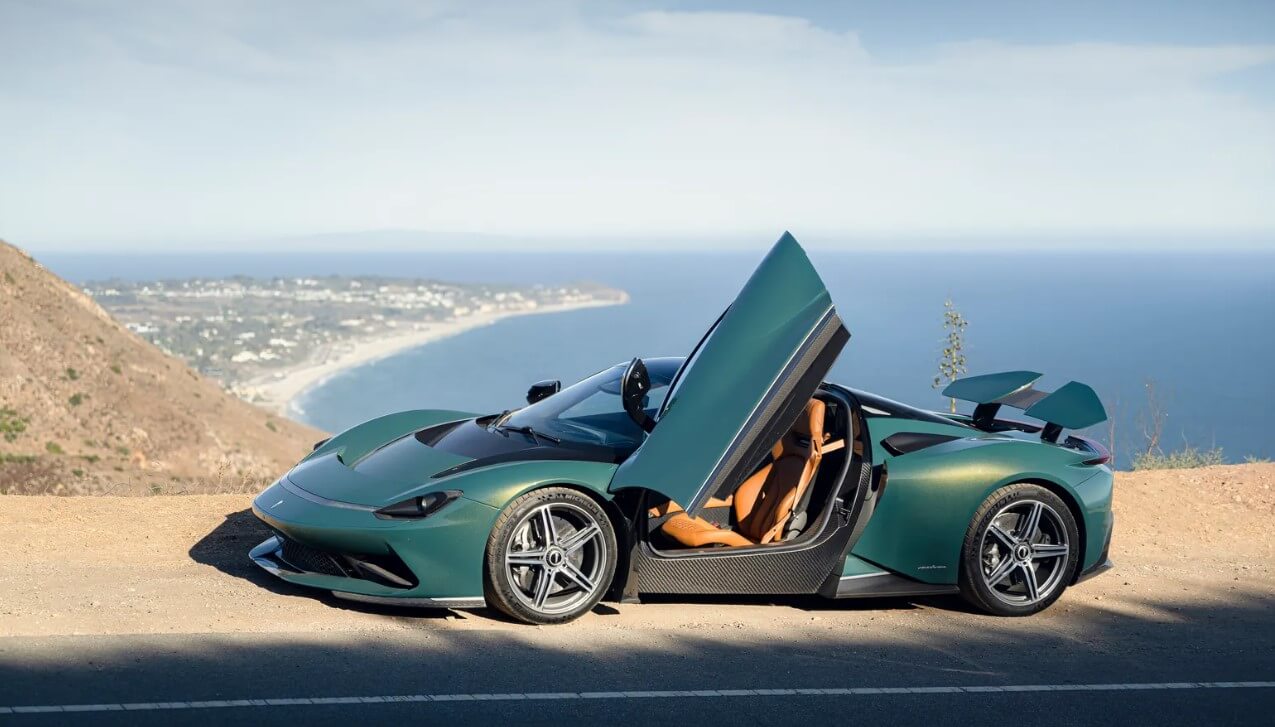The fascinating universe of The First Electric Car 1890s has undergone a beautiful development throughout the long term, from steam-fueled carriages to today’s sleek, premier demonstration vehicles. Among this breakthrough expedition, the rise of the electric vehicle stays as a key second, signaling a shift towards cleaner and more reasonable transportation. While electric automobiles are commonly related with present day progressions, their basic foundations track back to the commencement of car development.
- The Beginning of Electric Drive: A Journey from Humble Beginnings to a Promising Future
The idea of electric drive has enchanted innovators and designers for quite a long time, offering a cleaner, quieter, and more effective mode of transportation. While bridling power to move cars developed as soon as the eighteenth hundred years, it was in the late nineteenth century that the primary working First Electric Car started to come to completion, signifying the beginning of another phase in transportation.
The First Electric Car: Pioneering the Path

During the 1830s, Scottish innovator Robert Anderson created a rudimentary electric Car, considered as one of the earliest sorts of electric Car. Nonetheless, it was only after the 1880s that electric cars started to gain pace as a realistic mode of transportation. In 1884, English designer Thomas Parker created the major creation First Electric Car, and by the end part of the 1890s, First Electric Car were beating gasoline-controlled vehicles in the US.
- Gustave Trouvé’s Electrifying Breakthrough: Pioneering the First Practical Electric Tricycle
In the realm of electric vehicles, the name Gustave Trouvé stands apart as a guide of development and innovation. A creative French creator eager for electricity, Trouvé created a remarkable commitment to the universe of transportation in 1881 by uncovering the main feasible electric tricycle. This innovation marked a crucial crossroads throughout the entire existence of electric impetus, making ready for future headways in electric automobiles.
The Introduction of a Thought: Trouvé’s Vision for First Electric Mobility
Trouvé’s passion with power started from the get-go in his life. As a young guy, he dug into the research of electrical designing, keen to investigate the potential of this increasing innovation. His inquiring brain and creative personality prompted him to investigate several routes for different electrical applications, including the enhancement of smaller than expected electric engines.
In the last part of the 1870s, Trouvé’s consideration went to the subject of electric impulse for vehicles. At that point, steam-controlled and gasoline fueled automobiles were acquiring ubiquity, yet they were boisterous, cumbersome, and discharged undesirable pollution. Trouvé imagined a cleaner, quieter, and more effective form of transportation – First Electric Car.
Bringing the Vision to Life: The Birth of the Electric Tricycle

In 1881, Trouvé’s vision manifested as an earth shattering creation – the principal commonsense electric tricycle. This three-wheeled vehicle, controlled by a battery-powered battery and Trouvé’s own scaled down electric engine, was a wonder of advancement. It was lightweight, flexibility, and suited for arriving at paces of as much as 12 kilometers each hour.
The electric tricycle’s debut at the Worldwide Work of Power in Paris in 1881 earned great appreciation. Onlookers wondered over the vehicle’s quiet activity and smooth ride, an unmistakable change to the loud and rough steam-controlled vehicles of the day. Trouvé’s work displayed the achievability of electric drive and ignited interest in the enhancement of electric vehicles.
- A Tradition of Development: Trouvé’s Getting Through Effect
Gustave Trouvé’s spearheading work in electric impetus put an enduring impact on the historical backdrop of transportation. His electric tricycle filled in as an impetus for additional progressions in electric vehicle innovation, compelling designers and specialists to study the possible results of this promising method of transportation.
Today, as the world wrestles with the ecological issues presented by petroleum product-controlled cars, Trouvé’s vision of clean, supportable electric versatility resounds like never before. His earth-shattering innovation endures as a testimony of his creativity and unfaltering trust in the force of power to revolutionize transportation.
William Morrison’s Contribution to Electric Mobility

In the records of electric vehicle history, William Morrison stands firm on a prominent foothold as a visionary trailblazer who aided form the early improvement of electric propulsion. His essential accomplishment, the Morrison Electric Carriage, discovered in 1891, marked a significant achievement in the development of electric vehicles and showed the power of this innovation to revolutionize transportation.
- A Chemist’s Quest for Cleaner Transportation
Morrison, a scientist by vocation, held onto a great interest with power and its expected applications. As the nineteenth century came to a close, he moved his concentrate toward the expanding field of electric vehicles, sensing the requirement for a cleaner and more effective method of transportation contrasted with the typical steam-controlled and gas fueled vehicles.
- The Morrison Electric Carriage: A Signal of Development
In 1891, Morrison announced his important creation – the Morrison First Electric Car. This four-wheeled vehicle, looking like a usual pony drawn carriage, was controlled by a 4-pull electric engine and a 24-cell battery. The carriage could oblige up to six travelers and bragged a maximum velocity 14 miles each hour, a spectacular accomplishment for now is the optimal period.
The Morrison Electric Carriage made its introduction at the 1893 World’s Columbian Piece in Chicago, attracting the consideration of both the public population and the car company. Its sleek plan, smooth activity, and absence of discharges remained as a remarkable difference to the loud and polluting steam-controlled vehicles of the age.
- Morrison’s Heritage: Paving the Way for Electric Vehicles
While the Morrison Electric Carriage was not the very first electric car manufactured, it assumed a vital part in driving the innovation and showing its applicability. Morrison’s development sparked subsequent progressions in electric automobiles and brought out electric drive as a potential option in contrast to gas fueled vehicles.
Today, as the globe strives for greener and more reasonable transportation options, Morrison’s history lives on. His leading work on the first electric car built a basis for the cutting edge electric vehicle business and fills in as a sign of the getting through capability of electric urge to modify transportation.
The Rise and Fall of Electric Cars in the Early 20th Century

- A Tale of Innovation, Competition, and Changing Tides
The mid-twentieth century saw an enthralling element throughout the entire existence of transportation – the ascent and succeeding fall of First Electric Car. For a short moment, electric automobiles held strong on an unmistakable footing in the auto scene, presenting a cleaner, quieter, and more straightforward to comprehend option in contrast to gas controlled vehicles. In any event, a confluence of elements drove their degradation, consigning them to a specialized market long into the future.
- The Brilliant Period of Electric Cars: A Period of Commitment
In the mid 1900s, electric vehicles partook in a time of ubiquity, especially among metropolitan dwellers. Their simplicity of activity, absence of noise, and nonappearance of exhaust mist pursued them an enticing selection for city driving. Electric automobiles were especially famous among ladies, who liked their straightforwardness and neatness.
By 1900, electric vehicles comprised a key component of the car market in the US. They were considered as the fate of transportation, with many foreseeing that they will ultimately conceal petroleum controlled vehicles.
- Challenges and Setbacks: The Waning Appeal of Electric Cars
Notwithstanding their underlying achievement, electric vehicles met a few triggers that at last forced their downfall. One key difficulty was their constrained reach. Early electric vehicles could go roughly 50 miles on a solo charge, making them impracticable for exceptionally lengthy trips.
Another test was the absence of a wide charging system. While electric vehicles could be charged at home, the interaction was slow and unpleasant. As gas operated automobiles turned out to be more reasonable and their reach grew, the attractiveness of electric vehicles started to diminish.
- The Coming of the Electric Starter: A Defining Moment
A significant second in the collapse of electric vehicles happened in 1912 with the unveiling of the electric starter for gas-operated automobiles. Preceding this development, fuel-managed cars must be commenced physically utilizing a hand wrench, a tough and here and there unsafe cycle.
The electric starter made gasoline controlled vehicles much more easier to grasp, taking out a big benefit of electric automobiles. Also, the revelation of massive oil saves in the mid twentieth century made gas all the more quickly accessible and reasonable, further guiding the results for fuel controlled automobiles.
- The Downfall and Reappearance of Electric Vehicle
By the 1930s, electric vehicles had basically vanished from the market, superseded by gas fueled vehicles that gave more prominent reach, accommodation, and reasonableness. Electric vehicles stayed a niche item for quite a long time, largely utilized in specialized purposes, for example, golf trucks and conveyance vehicles.
It was only after the late twentieth century that fears about air contamination and the ecological consequences of non-renewable energy sources ignited a restored interest in electric vehicles. Progressions in battery innovation and the improvement of additional productive electric engines make electric automobiles a more beneficial choice.
Today, electric automobiles are by and by acquiring recognition, propelled by worries about environmental change and the need for cleaner transportation choices. The fate of electric automobiles seems encouraging, with state controlled administrations all over the globe advancing their reception and automakers putting actively in their turn of events.
The reappearance of Electric Cars in the 21st Century
- A Renaissance Fueled by Innovation and Environmental Concerns
In the 21st 100 years, electric automobiles have experienced a remarkable rebirth, pushed by mechanical progressions, expanding natural worries, and a reestablished concentrate around practical transportation. Yet again following quite a while of lack of definition, electric vehicles are attracting the consideration of buyers, automakers, and governments around the world.
- Addressing the Challenges of the Past
The reappearance of electric automobiles can be attributed to a few variables, recalling substantial headways for battery improvement. Early electric vehicles were tortured by restricted range and excessive recharge times, making them inappropriate for certain drivers. Be that as it may, present-day lithium-particle batteries have emphatically further enhanced energy thickness and charging speeds, empowering electric vehicles to go greater distances and re-energize all the more promptly.
- Advancing Technology and Innovation
Notwithstanding battery enhancements, electric vehicles have benefitted from progressions in electric engine innovation, power hardware, and lightweight materials. These developments have encouraged more effective, strong, and lighter electric cars, boosting their presentation and reach.
- Environmental Concerns and Sustainability
Developing issues regarding environmental change and the ecological effect of petroleum derivatives have likewise assumed a vital position in the restoration of electric autos. As social orders hunt for cleaner transportation options to lessen ozone depleting substance discharges and further increase air quality, electric automobiles have surfaced as a promising arrangement.
- Government Incentives and Support
Legislatures overall have detected the capacity of electric automobiles to manage ecological challenges and lower rely on petroleum products. Subsequently, several nations have carried out impetuses and arrangements to advance the acceptance of electric automobiles, including tax cuts, appropriations, and interests in charging structure.
- Automakers Embracing the Electric Future
Automakers have met the expanding enthusiasm for electric vehicles by putting energetically in inventive work, offering new electric vehicle models, and growing their electric vehicle arrangements. The auto company is going through a vital transition, with electric vehicles preparing to assume an unmistakably identifiable function coming soon for transportation.
The Road Ahead: A Splendid Future for Electric Vehicles
The introduction of electric vehicles in the 21st century marks an essential transition in the car scene. As innovation proceeds to develop and ecological issues grow, electric automobiles are strategically set up to turn into the prevalent way of transportation in the future few decades. With their zero-outflows activity, further expanded execution, and growing reasonableness, electric vehicles offer a convincing alternative for a cleaner, more practical, and more proficient transportation future.
End
As we conclude up this excursion through the beautiful history of the first electric car, it is evident that the idea of electric drive has fascinated designers and specialists for quite a long time, promising a cleaner, calmer, and more productive mode of transportation. The growth of electric vehicles has been a story of advancement, flexibility, and diversity, with various trailblazers adding to its progression.
From the early forward leaps of Gustave Trouvé and William Morrison to the ascent and collapse of electric vehicles in the mid twentieth hundred years, the tale of electric vehicles is associated with mechanical progressions, cultural revolutions, and ecological problems. The emergence of electric vehicles in the 21st century connotes a revived commitment to sensible transportation and an optimistic future for this pioneering innovation.
As we go ahead, the tradition of the First Electric Car’s trailblazers fills in as an indication of the getting through capability of electric urge to disturb transportation. With continual progressions in innovation, expanding natural awareness, and unfaltering help from states and organizations, electric vehicles are ready to assume a key part in molding a cleaner, more manageable, and more productive future for mobility.
Generally, the tale of the electric vehicle is a demonstration of human invention, tirelessness, and the relentless desire for a cleaner and more rational future. As we keep on examining the obstacles and possible open doors that lie ahead, the electric car continues as a promising sign, shining the way towards a more beautiful and all the more earth mindful period of transportation.
